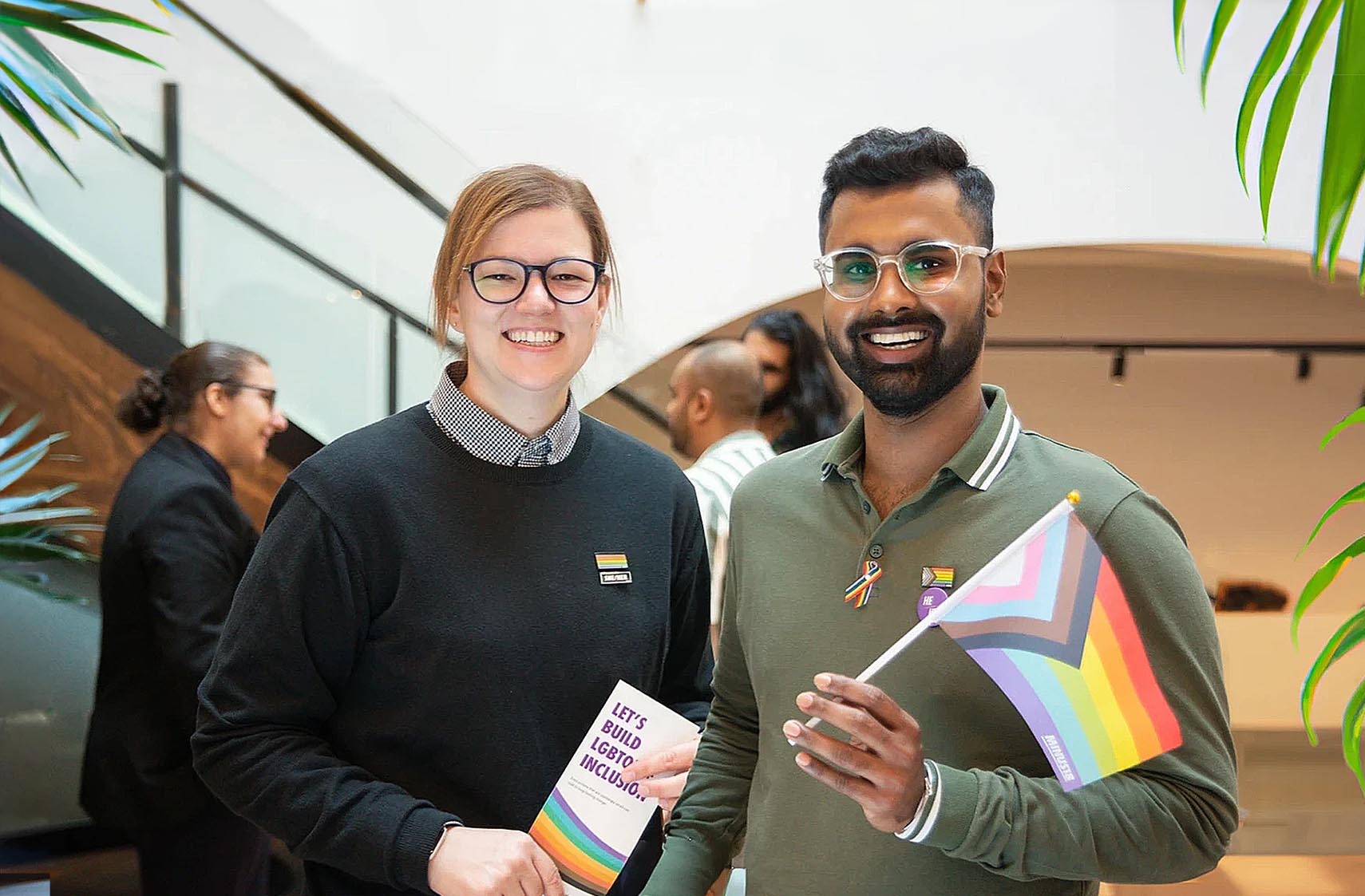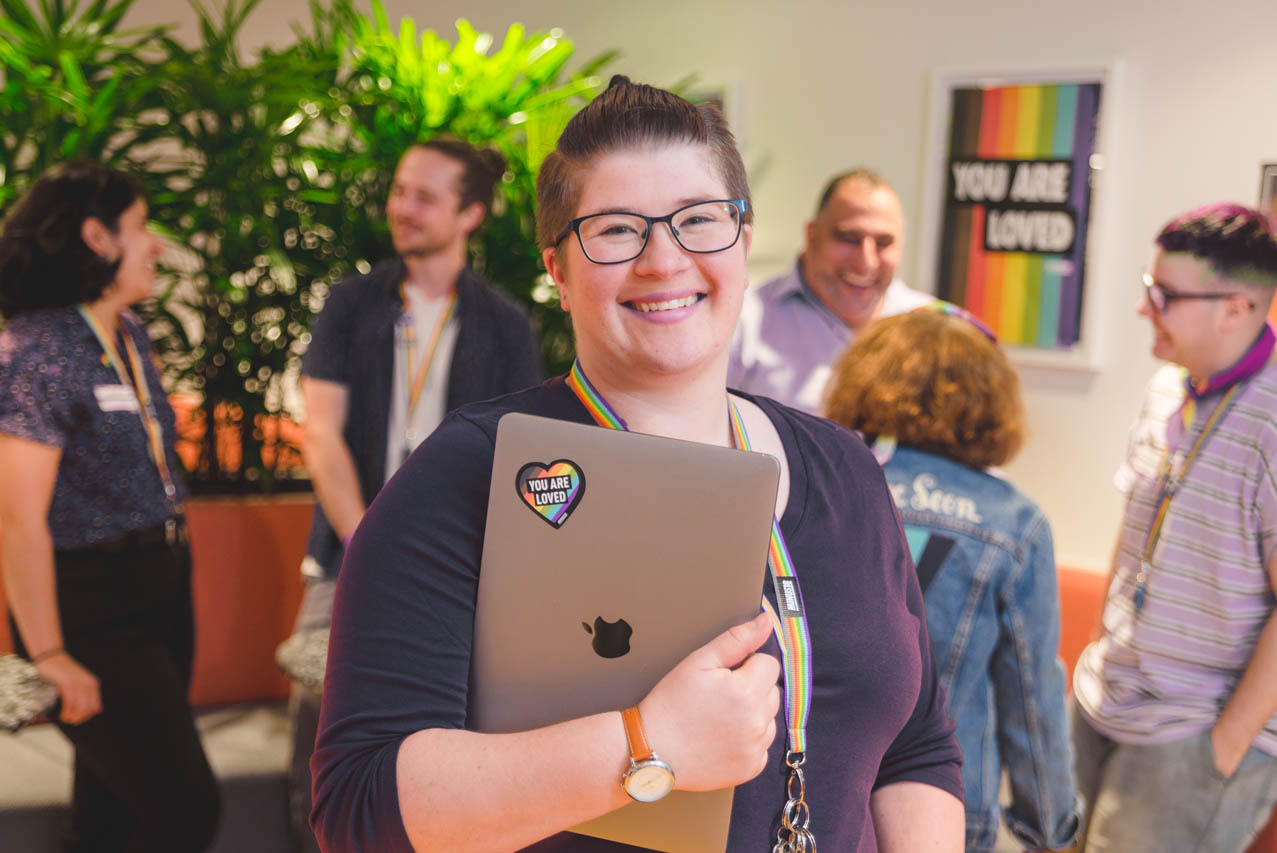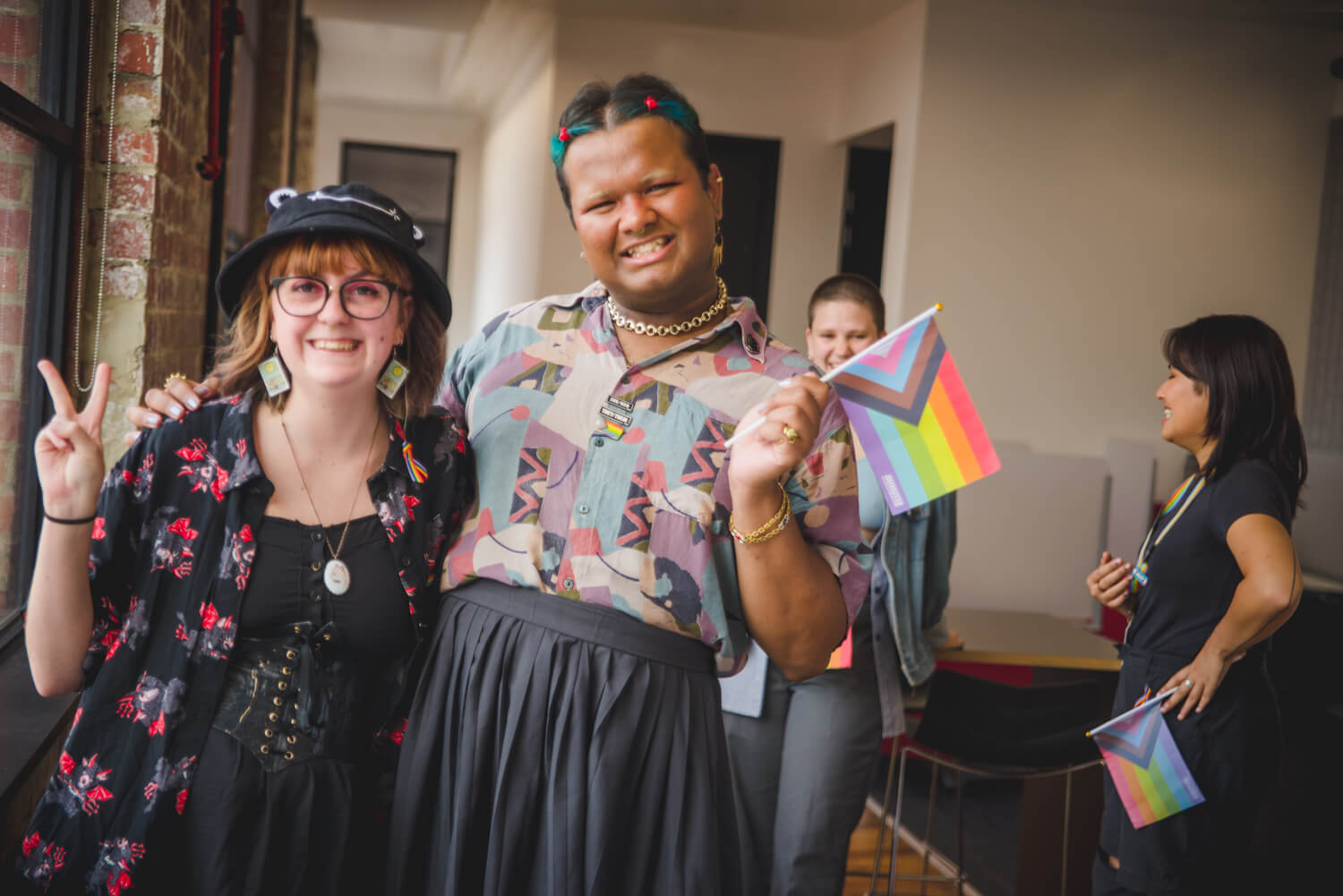
Tips to be an LGBTQIA+ Ally
February 10, 2023
An ally is someone who takes action to support and advocate for the equal treatment of a community other than their own - especially when it’s challenging or uncomfortable to do so. If you don’t experience LGBTQIA+ discrimination yourself, then you’re in a unique and powerful position to use your voice to create a safe and welcoming environment for others who do.
Even those of us who are LGBTQIA+ can be allies to others in the community - like someone who is a lesbian demonstrating allyship towards bisexual people.
We’ve collected LGBTQIA+ allyship tips from people across Australia and compiled our highlights below to get you started.

Learn About LGBTQIA+ Identities
There’s a rich diversity of experiences within the LGBTQIA+ community - even among those of us who share the same identity. Understanding these experiences will prepare you to engage in more allyship from a place of genuine understanding. Some ways you can learn more about these experiences include:
Be an Active Listener
Listen with an open mind and heart to the experiences of your LGBTQIA+ colleagues, friends and family. Actively listen to their experiences, even if they’re difficult to hear. Seek to learn from those outside your immediately circles too - especially those with identities which may be new or unfamiliar to you. You couldFollow or Engage in LGBTQIA+ Media
Follow content creators, organisations and podcasts from people of different LGBTQIA+ identities, including those who have intersectional lived-experiences, like those who are also living with a disability, people of colour, or Aboriginal or Torres Strait Islander.Attend Guest Speakers or Inclusion Training
Attend LGBTQIA+ inclusion training or guest speaker sessions to gain a deeper understanding of how to put these learnings into practice, and ensure you’re learning from the most up-to-date sources.
Model Inclusive Language
Learn about and use terminology that’s inclusive of LGBTQIA+ people.
Respect Privacy
Always ensure you have permission before you share anyone’s identity, and ensure you keep questions appropriate. For example - don’t ask LGBTQIA+ people about their bodies, surgical status or sex lives unless you have a close relationship with explicit permission to ask these questions.Avoid Assumptions
The language we use can imply or assume another person’s identity, particularly when it comes to gender. Using gender neutral language when you don’t know someone’s gender helps to avoid these assumptions. For example, you can ask a man you’ve just met if he has a “partner” instead of a “girlfriend” to avoid assuming that he’s straight.Use Correct Pronouns
Pronouns are the words we often use in place of someone’s name, such as he/him, she/her or they/them. Learn about why pronouns are important, and using them at work here.

Be Visible
Due to frequent experiences of discrimination LGBTQIA+ people often assume that a space or person is not inclusive until shown otherwise.
Displaying visible LGBTQIA+ symbols of inclusion signals to others that you’re someone who understands and supports them. You could:
- Display the rainbow flag – wear a rainbow pin, lanyard, or display inclusion posters.
- Share your pronouns – try wearing your pronouns as a badge, or including them wherever your name is published, like your email signature or social media profile.
- Re-share content from the LGBTQIA+ people and organisations you follow.
- Create environments where others feel comfortable being visible allies too.

Use Your Voice
Stand up for LGBTQIA+ people when others don’t respect them. This includes speaking up when you see discrimination occur, even if the person being talked about isn’t around.
Think of the ways you can build LGBTQIA+ inclusion in your everyday life. You could:
- Help organise events and initiatives that seek to build LGBTQIA+ inclusion.
- Sign petitions and advocate for law reform in the areas that LGBTQIA+ people in Australia and the world still face discrimination.
- Support businesses and charities that are owned and operated by LGBTQIA+ people.
- Continue building inclusion in your everyday life, and advocate for others to do the same.
Want to share these tips?
These tips are available in poster and flyer format, so you can easily share them with your cohort.
Related Articles

Much of our language reinforces outdated gender binaries. Here are some gender neutral alternatives for daily use.

Being an ally to the LGBTQIA+ community might seem like a big task. Here's where to start.

Building LGBTQIA+ inclusion at work grows closer, more effective teams.

Ways to build LGBTQIA+ inclusion for students and teachers.